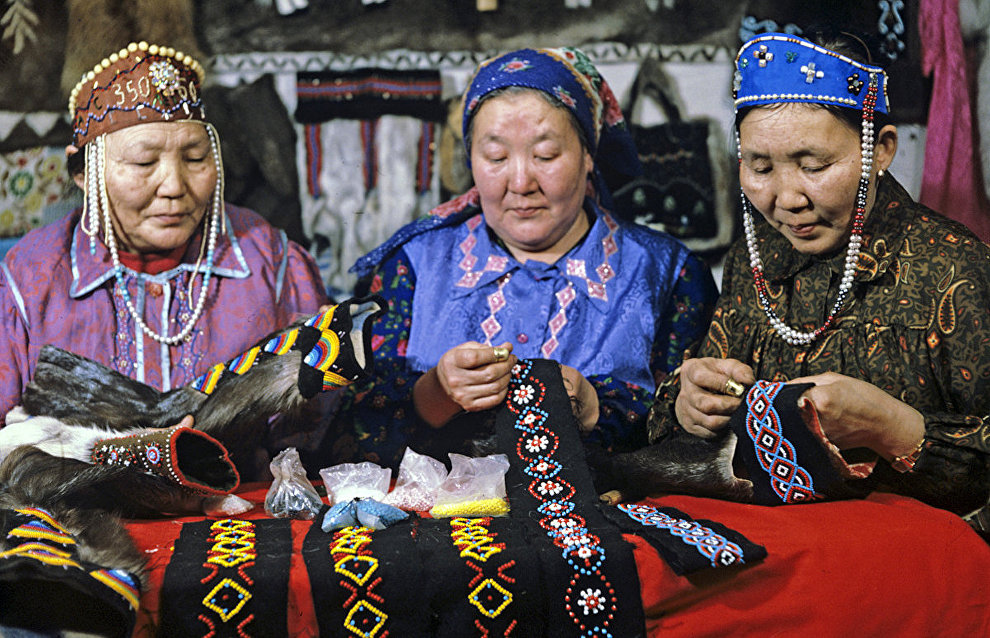Arctic Fashion
Evenki khelmi
A khelmi is a breast cover and a major part of traditional Evenki attire. It protects the breast and throat from frost and wind. It is worn under a kaftan over the throat and hangs down to the stomach. A female khelmi can be particularly beautiful.
Evenkis were very elaborate in decorating traditional khelmis. Cloth applique and bead embroidery at the collar and on the belt form symmetric geometrical figures that end with color accents on the breast. White, blue, gold and pink colors prevail in the embroidery. Narrower black stripes emphasize and separate white, gold and blue bead embroidery.
Yakut diabaka and belt
A diabaka is a high female head dress made of wolverine fur with a squirrel's tail in the front, lynx fur in the back with decorative fabric and a silver ring at the top (tuosakhta). The ring represents the Sun and is lavishly decorated with a sophisticated design. Stealing and damaging head dresses were considered a major sin.
A belt is a typical feature of the Turkic and Mongol attire that had an important ritual significance. Yakuts always paid special attention to the belt. On male clothing it reflected the image of a man as a protector, warrior and his lineage. Yakuts could determine the social and property status and occupation of its owner by his belt, his manner of wearing it and what was attached to it.
Aleutian hat
Despite the severe climate, Aleuts very rarely wore hats. Only when they went into the sea, they put on a kind of peak or conic wooden hats. It was very difficult to make these hats. They had to find the right material — a trunk washed out by the sea, hollow it out to make a tablet, bend it and sew its ends with tendons. The hat was then painted in bright colors and adorned with feathers. In this way, Aleuts protected themselves against evil spirits and attracted good luck when hunting.
Eskimo piercing and tattoo
Before the 18th century, Eskimos pierced their noses or upper lips to hang walrus teeth, bone rings or glass beads. Decorations from rings, feather rods, beads and fragments of shells were also put into cuts under the low lips. Sometimes buttons from shells formed a stripe as if they had another row of teeth.
Eskimos are the only people of the North to preserve the tattoo ritual up to this day. They used it to protect themselves from evil spirits, identify a family or clan and prepare for afterlife.
